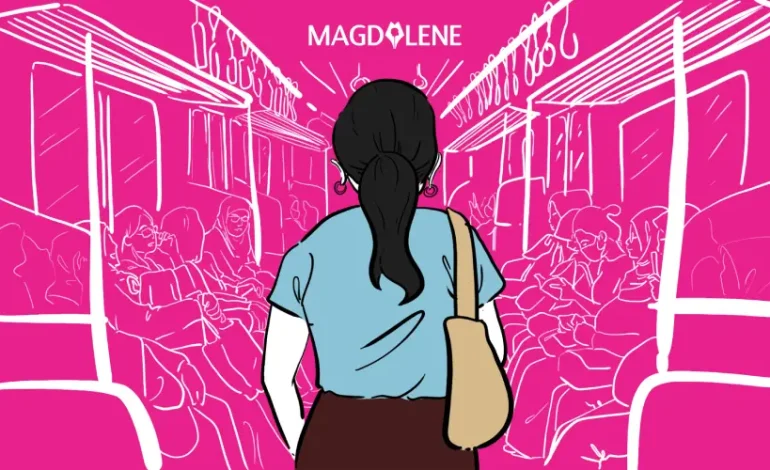From Walking to Cycling, How We Get Around a City is a Gender Equality Issue

In urban societies around the world, there are gendered differences in how people get to where they need to go. From the number of journeys taken and the distances travelled, to the purpose for travelling in the first place, women’s experiences of journeying through the city differ significantly from those of men.
In many cities men tend to have greater access to private cars than women. They also commute further in the city.
By contrast, constraints such as childcare and household tasks, fall disproportionately on women. In some cities this means they are confined at home. In others, and despite perceptions of relative vulnerability and safety, women tend to rely on public transport more than men.
These gendered differences further extend to what transport experts and epidemiologists term active travel: Walking and cycling. This has consequences for everyone. Active travel, after all, has been shown to reduce air pollution and greenhouse gas emissions, while improving population health.
For a recent study, we examined the extent to which men and women’s access to active travel varies across 19 cities from 13 different countries on five different continents. We found that women in most of our cities achieve as much active travel time as men. However, by being more likely to walk and less likely to cycle, women’s access to the city is significantly limited.
Read also: Gender Makes a World of Difference for Safety on Public Transport
Transport Variations
Active travel can involve walking and cycling for your entire journey or the incidental walking and cycling you might do on the way to accessing public transport.
We analysed secondary data from population-representative travel surveys, which has asked respondents to report their travel activities for a day or two. The cities these surveys covered were Accra, Kisumu, Cape Town, Delhi, Melbourne, London, Berlin, Cologne, Hamburg, Munich, Zurich, Buenos Aires, Sao Paulo, Santiago, Bogota, Mexico City, Chicago, Los Angeles, and New York City.
Of the three modes of transport we examined – walking, public transport and cycling – cycling showed the greatest variation between the cities.
We found that women are half as likely as men to cycle overall. The lowest levels of cycling were in Accra and Cape Town, with almost no cycling among women and less than 1% among men. The highest levels were in the four German cities we looked at, with an average of 14–15% for the two gender groups: women in three of those cities were more likely to cycle than men.
Research has shown that there are vast discrepancies in how vulnerable women, as opposed to men, are – or feel – while walking, or on public transport. This vulnerability is particularly pronounced when it comes to cycling.
A lack of safe infrastructure – from off-road paths or protected bike lanes – goes some way to explaining why women are less likely to use a bike. Research suggests that they may be generally more risk averse than men. The German cities in our study demonstrate that this can be changed given their higher rates of overall cycling and little gender inequality.
However, research also highlights social and cultural norms around the world that discourage women from cycling. Cycling is sometimes perceived as a masculine domain, especially in those cities that lack safe infrastructure and where cycling levels are low. This is made worse in settings where women are socially restricted from travelling alone, such as in Karachi, Pakistan.
Access to the City
In most cities, women were more likely than men to report that they had not travelled outside of their home at all on the day of the travel survey – a four percentage point difference overall. Only two of the 19 cities had equal levels of immobility: Kisumu in Kenya and Los Angeles in the US.
The cities with the most drastic gender gaps were Delhi (with a 26 percentage point gap), Accra (12 percentage point gap) and Sao Paulo (9 percentage point gap). In Delhi, nearly 60% of women reported no trips outside their home on the day of the survey. This rate of women being confined to their homes is far higher than the average across all the cities, where 26% of women and 22% of men reported no trips.
What is surprising is that despite women being less likely to have travelled at all, they nonetheless achieved 5% more physical activity through active travel than men across our cities on average. We found that women were more likely to walk, and to walk all the way to where they’re going.
Read also: Booklet Tackles Sexual Harassment on Public Transport
On average our female respondents achieved 62% of their active travel time in trips where they only walked. In comparison this share is 54% among men. In addition, in all cities but Delhi and Mexico City, women were more likely to use public transport than men.
Women’s greater dependence on walking and public transport results from two major factors. First, due to gender inequality – both within households and at the societal level – women have lower access to private cars. This inequality is likely worse in countries with low levels of vehicle ownership. Second, beyond the social norms and lack of infrastructure mentioned above, there are other constraints such as a need to transport groceries, for example, or to ferry children around, that make cycling less convenient for women.
Taken together this data suggests that women are achieving as much active travel time as men, but by virtue of their being more likely to walk and less likely to cycle, they have comparatively less access to the city. This can result in their options for jobs, education and health facilities and social networks being restricted.
Making streets safer for both walking and cycling is crucial to public health, as is making public transport more accessible and more affordable. Some laudable steps are being taken to do this in England.
It is well established that those who regularly walk and cycle accrue many health benefits. But public transport users do too. After all, many of those who use buses and trains actually achieve their 30 minutes of daily physical activity or their 10,000 steps per day just by getting to the station or bus stop and back.
This article was first published on The Conversation, a global media resource that provides cutting edge ideas and people who know what they are talking about.






















